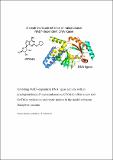Inhibiting NAD+-dependent DNA ligase activity with 2-(cyclopentyloxy)-5'-deoxyadenosine (CPOdA) offers a new tool for DNA replication and repair studies in the model archaeon Haloferax volcanii
Abstract
DNA ligases play an essential role in many aspects of DNA metabolism in all three domains of life. The haloarchaeal organism Haloferax volcanii encodes both ATP- and NAD+-dependent DNA ligase enzymes designated LigA and LigN, respectively. Neither LigA nor LigN alone is required for cell viability but they share an essential function, most likely the ligation of Okazaki fragments during chromosome replication. Here we show that 2-(cyclopentyloxy)-5’-deoxyadenosine (referred to as CPOdA), originally developed as a inhibitor of bacterial NAD+-dependent DNA ligases, is a potent inhibitor of the growth of Hfx. volcanii cells expressing LigN alone, causing chromosome fragmentation and cell death, while cells expressing LigA are unaffected. Growth inhibition occurs at significantly lower CPOdA concentrations (MIC ≤ 50 ng/ml) than those required for inhibition of bacterial growth (≥ 2 µg/ml). CPOdA has the potential to become a vital tool in DNA replication and repair studies in this important model organism.
Citation
Giroux , X & MacNeill , S 2015 , ' Inhibiting NAD + -dependent DNA ligase activity with 2-(cyclopentyloxy)-5'-deoxyadenosine (CPOdA) offers a new tool for DNA replication and repair studies in the model archaeon Haloferax volcanii ' , FEMS Microbiology Letters , vol. 362 , no. 21 , fnv181 . https://doi.org/10.1093/femsle/fnv181
Publication
FEMS Microbiology Letters
Status
Peer reviewed
ISSN
0378-1097Type
Journal article
Collections
Items in the St Andrews Research Repository are protected by copyright, with all rights reserved, unless otherwise indicated.

